Social Contribution
Third activity report / October 5-10, 2018
Cambodia: Mangrove Conservation Activities
Our third activities took us to Kampot Province in Cambodia, where the nonprofit organization NICE put us in contact with the local nonprofit Trapaing Sangke Fishing Community (TFC). A group of fourteen group employees joined TFC in carrying out mangrove conservation activities.
Why conserving mangroves is important
The plants that grow in brackish waters where freshwater and saltwater meet are collectively known as mangroves. Mangrove ecosystems are made up of symbiotic relationships between plants and animals that exist in the water and soil around them. They are unique biological systems found only in a handful of places in the world.
Mangrove ecosystems play an important role in absorbing and storing carbon dioxide. They are also one of the most vulnerable to the rising sea levels that result from global warming. For this reason, they are increasingly becoming the focus of measures to counteract and cope with climate change.
Cambodia's mangrove ecosystems are further threatened by massive harbor development projects and illegal deforestation, and their destruction is dealing a serious blow to the local fishing industry as well. Mangrove conservation activities are critical if we are to protect these precious environments and the habitats they support.
Cambodia has suffered from a tragic history, most notably the mass murders that occurred under the Pol Pot administration. The experiences that participants had there gave them an opportunity to reconsider their ideas about peace and think about human rights issues as well.
Conserving biodiversity
The dead leaves that fall off mangrove trees are collected by microorganisms, insects, shellfish, shrimp, crab, and so on—organisms that are then eaten by fish. These fish are in turn eaten by birds and mammals. Baby fish grow up among the mangroves, as it is a nutrient-rich environment that also offers plenty of protection from predators. These fish eventually grow up to provide a critical food source for the local population.
Mangrove conservation activities
- Gathering mangrove seeds
The team traveled to the mangrove forest to collect seeds from the branches of mangrove trees that grow at a depth of 50-120 centimeters. - Potting mangrove seedlings
Harvested seedlings were planted in seedling pots filled with seedbed soil. - Planting mangroves
Seedlings were planted at a depth of about 50 centimeters once they reached about a meter in height.
Conservation activity results
Over the course of three days, our conservation team harvested and potted 1,554 mangrove seedlings. They also planted 370 seedlings that had been harvested and grown by other groups. We also created a sign showing our activity results to act as a landmark for future CITIZEN Group visits and activities.
The unfamiliar showers, restrooms, meals, and other aspects of everyday Cambodian life first came as a shock to our participants, but as they settled in and got involved in the activities, they came to have a deeper understanding of the Cambodian people and their way of life. The activities also gave the participants an opportunity to work alongside people in group companies that they normally wouldn't interact with, having fun and using teamwork to come up with creative solutions. In the process, the participants developed invaluable friendships as well.
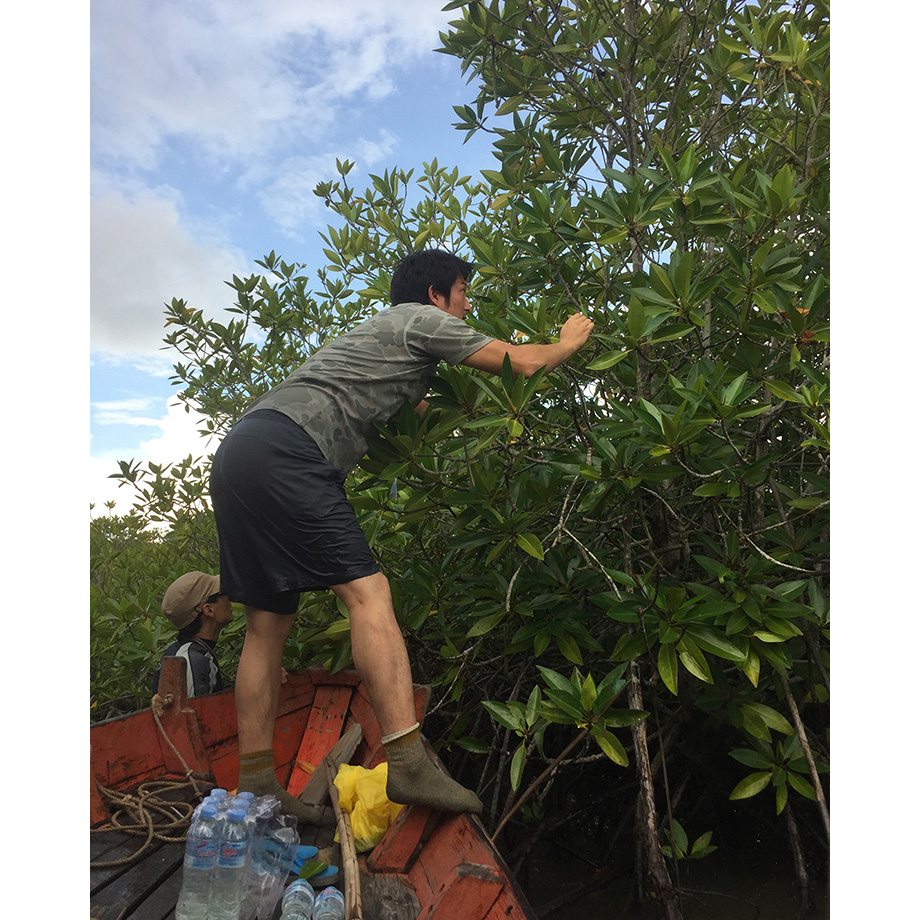
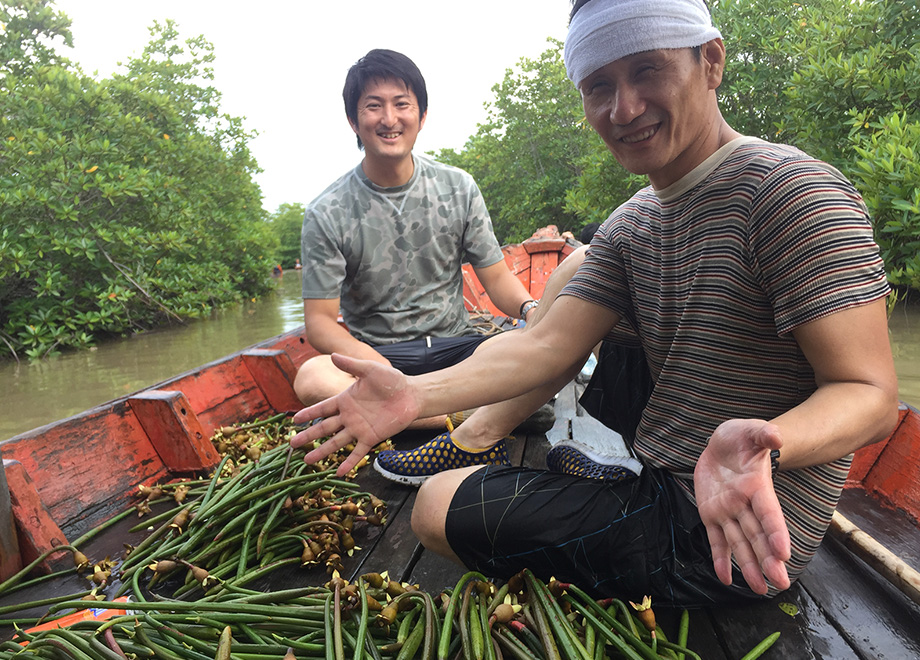
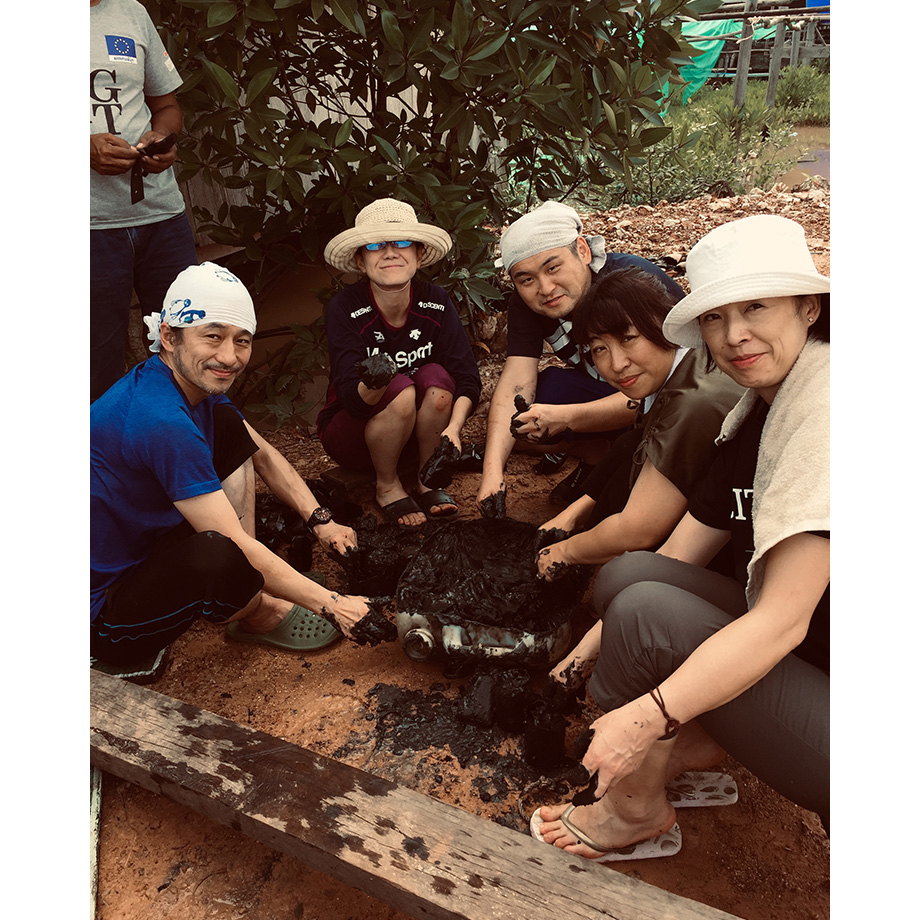
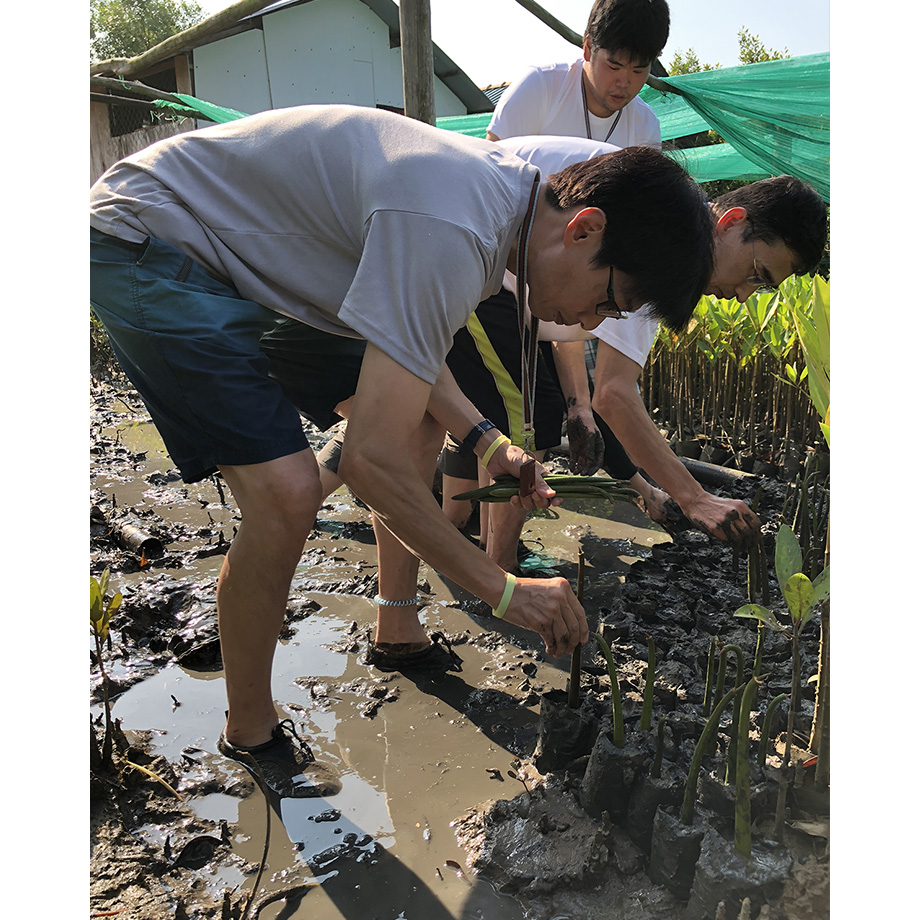
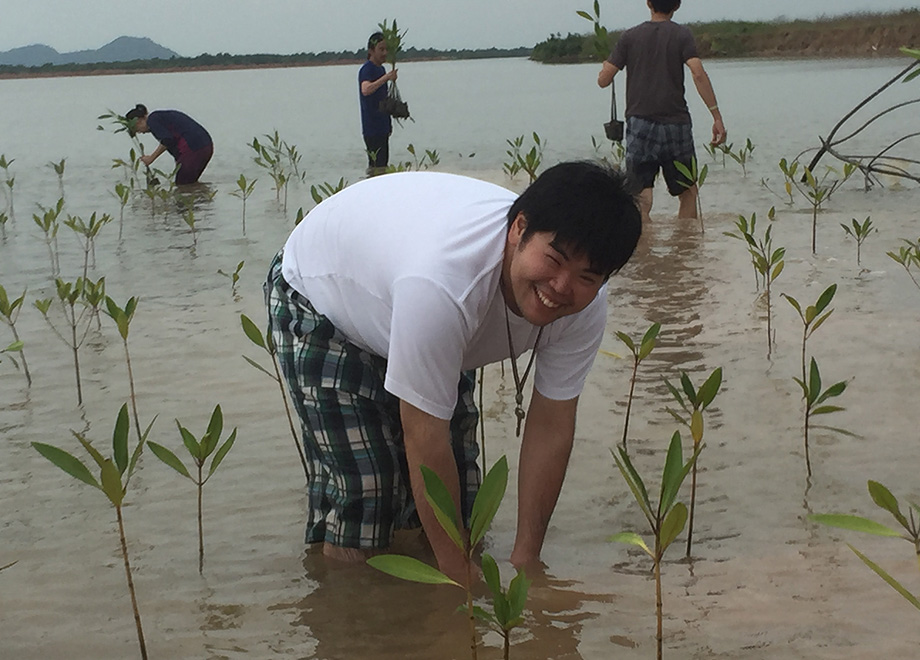
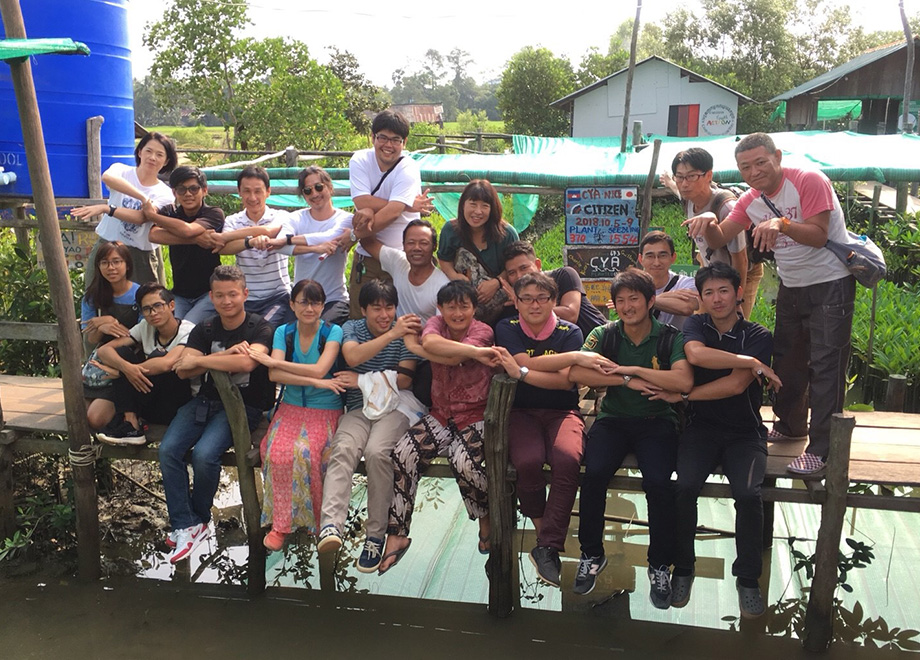
Participant feedback
- This was a truly precious opportunity to learn about development, environmental destruction, and the struggles that local communities go through as Asia undergoes rapid economic development. We hear about sustainability issues like this in the news, but this was an invaluable experience that allowed us to see it and hear about it firsthand, while also doing our part—however small—to make a positive impact.
I also got a real sense of how critical natural environments are to the health of our planet. (Participant from the Watch Development Division at Citizen Watch)
- The activities offered a host of inspiring interactions with a different culture, providing a wonderful opportunity to broaden my thinking and perspectives. Working with a diverse group of people with diverse values—people I normally wouldn't interact with on the job—was also a valuable experience that allowed us to share a variety of thoughts and ideas. (Participant from the Administrative Division at Citizen Finedevice)
- Seeing and hearing about the situation in Cambodia through this experience showed me how difficult it can be for nature to recover from development activities carried out by small group of people, and what a struggle it can be to recover. I realized how much easier it is to destroy something than it is to create it. (Participant from the Manufacturing Division at Citizen Micro)
- On the last day of the trip, participants visited the Tuol Sleng Genocide Museum, which tells the story of Cambodia's hidden cruelty towards and execution of intellectuals around 1975, in an effort to suppress new cultures and ideas under its communist regime. The museum houses the remains of numerous victims of the slaughter, still bearing the wounds they suffered. It was painful to hear the testimony of those that suffered through this tyrannical rule and survived. (Participant from the Development Division at Citizen Machinery)